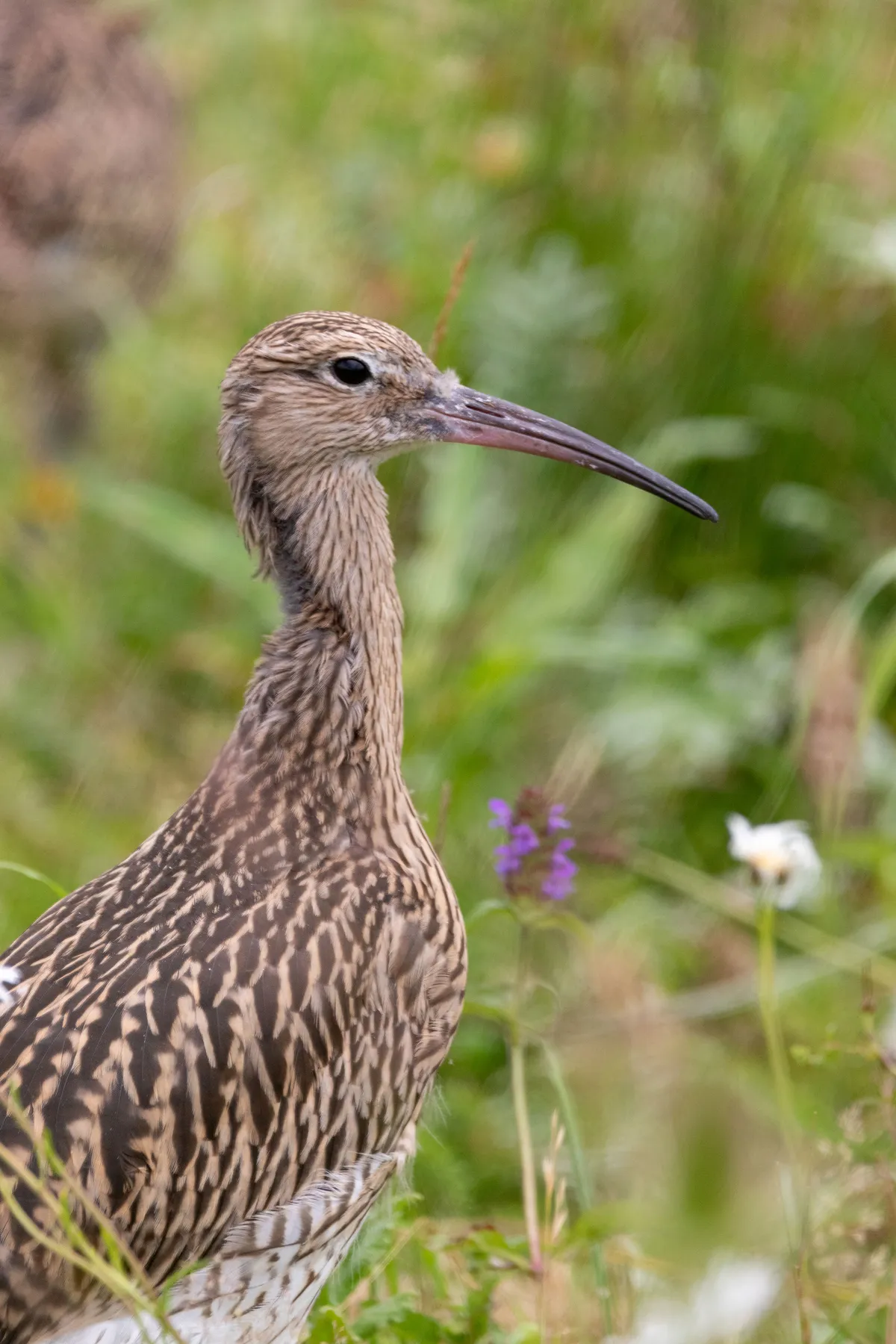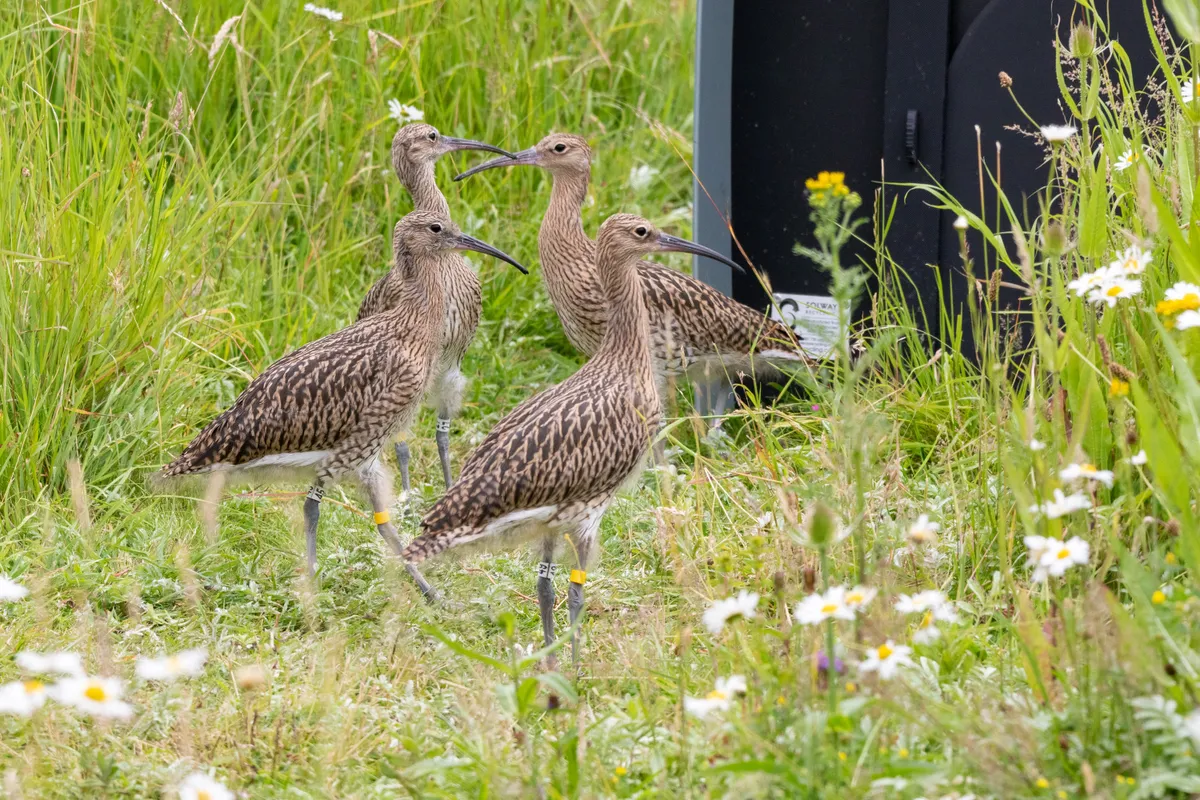Recently called the ‘Panda of UK conservation’ by ministers, the curlew is the UK’s largest wading bird and can be recognised by its long legs and down curved bill.
Habitat loss has contributed to the decline of the UK’s curlew population by almost half, causing the species to be considered ‘near threatened’ globally, while the curlew is now classed as a ‘priority species’ in the UK.
As part of the project, dozens of curlew have been released onto reserves in Gloucestershire after being raised in a nursery by the Wildfowl and Wetland Trust (WWT).

More than 50 curlew chicks were rescued from military airbases in Norfolk by the conservation charity, where they would have been destroyed under licence to protect air safety.
Mark Roberts, Principal Conservation Breeding Officer at WWT, said:
“The clock is ticking and we’re quickly running out of time to save our biggest wading bird.
“Our team have had their hands full playing Mary Poppins to over 50 curlew chicks over the past several weeks but they’ve outgrown their nursery and seem to be settling onto the reserve nicely.”
It is hoped that the birds will join endangered wild curlew populations and return to the Severn Vale in future years, boosting the numbers of breeding pairs in the area.
How to identify and where to see curlews
A very large, impressive wader with a tell-tale large, downwardly curved bill for probing deep into worm burrows. Declining in number, the curlew is bolstered by winter visitors and its melancholic ‘cur-lee’ call still resonates across winter mudflats.
Curlews have brown and grey feathers, thin curved beaks, and are likely to be found in British wetlands in both the summer and winter months.

Why is the curlew endangered?
Over the last few decades, curlews have struggled to raise their young in the British countryside.
Even in healthy populations of curlews, only small numbers of curlew chicks survive to fledge, and young curlews freeze when they sense danger making them particularly vulnerable to farm machinery and predators.
Because curlews often nest in silage fields, their eggs are also prone to being hunted by foxes and crows, which are more widespread in Britain than anywhere else in Europe.
Changes in countryside management over the last few years has also meant that curlew eggs are also easily destroyed by farm equipment.

The WWT have been working with farmers to help delay hay cutting to enable them to nest, and put up electric fences to keep out predators like foxes and badgers.
Curlew expert and Project Officer at WWT Mike Smart said:
“There is something undeniably magical about the curlew and we want people in southern England to be able to enjoy them, their songs and their habits.
“By working with farmers to delay hay cutting, putting up electric fences to keep out predators like foxes and badgers and introducing head-started chicks, maybe we can conserve curlews here and help curlew in other lowland places like the Thames and the New Forest.”
WWT has already used the technique to boost black-tailed godwit and common crane numbers in the UK as well as spoon-billed sandpiper numbers in Russia. This year, it is also supporting the work of Curlew Country in Shropshire who first headstarted curlew in 2017.
